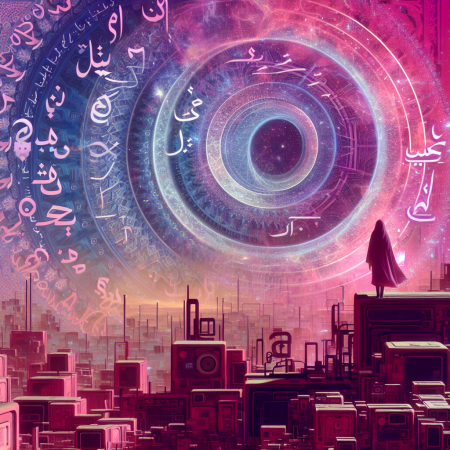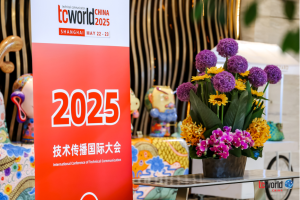Understanding the Arabic Language
To provide effective and accurate Arabic-to-English translation services, it's essential to have a deep understanding of the Arabic language, its unique script, and the various dialects and regional variations.
The Unique Arabic Script
The Arabic language has a unique script, written from right to left, which greatly differs from English and other languages that use the Latin script (Smartling). The Arabic language contains 28 letters, with different variations depending on their position in a word. This intricate writing system can pose challenges in translation and localization, necessitating a skilled Arabic-to-English translator.
In addition to the unique direction of writing, Arabic script is also characterized by its beautiful calligraphy. Each letter can have up to four forms, depending on its placement in a word, and most letters are connected to others, forming a flowing line of text.
Arabic Dialects and Regional Variations
Adding to the complexity of Arabic to English translation, the Arabic language encompasses different dialects and regional variations (Smartling). Arabic is the fifth most spoken language in the world, with over 420 million native speakers, who use various forms of the language depending on their geographical location.
The Arabic spoken in the Middle East, for instance, can significantly differ from the Arabic used in North Africa. These variations can influence the meaning of words and phrases, making it crucial for translators to be familiar with the specific dialect used in the source text.
Accurate Arabic-to-English translation, therefore, requires more than just linguistic competence. It demands an understanding of the cultural context, regional nuances, and the specific dialect of the Arabic language used. This ensures the translation effectively communicates the original message in a way that is culturally appropriate and easy to understand for the target audience.
Navigating these complexities can be challenging, but with a professional Arabic-to-English translation service, you can ensure your message is accurately and effectively conveyed. Whether you need Arabic to English document translation, audio translation, or legal translation, we have experts capable of bridging the language gap.
Challenges in Arabic to English Translation
Arabic to English translation, while essential in our increasingly connected world, presents unique challenges. These stem primarily from significant linguistic differences and deep-rooted cultural and contextual considerations.
Linguistic Differences
Arabic and English are fundamentally different in their grammar, vocabulary, and sentence structure, translating between the two a complex task (WriteLiff). Arabic, for instance, has a complex verb system with various tenses, moods, and aspects that can be challenging to translate accurately into English. Furthermore, the lack of standardized transliteration rules for Arabic words and names adds another layer of difficulty, as different transliteration systems may produce different spellings and pronunciations.
Another challenge arises from the fact that Arabic encompasses various dialects and regional variations, including Egyptian, Levantine, Gulf, and Maghrebi dialects. Translating from these dialects to English poses unique challenges and can vary depending on the target audience's preferences, dialects, glossaries, cultural aspects, and local language used in the public.
Cultural and Contextual Considerations
Culture plays an integral role in language, and Arabic is no exception. This language is highly context-dependent, which makes it difficult to accurately convey the intended meaning in English translations without losing nuance.
Translating Arabic idioms, proverbs, and cultural expressions into English can be particularly challenging. These linguistic elements often have no direct equivalents and require creative adaptation to preserve their meaning and cultural significance. In addition, cultural differences between Arabic-speaking countries and English-speaking countries can pose challenges in translating idioms, metaphors, and cultural references. Translators need to have a deep understanding of both languages and cultures to accurately convey the intended meaning (Smartling).
These linguistic and cultural challenges underscore the importance of working with professional Arabic to English translators who possess deep knowledge and expertise in both languages. A proficient Arabic-to-English translator not only translates words but also grasps the nuances, dialects, and cultural contexts to ensure accurate and effective translation. To explore more about the complexities of Arabic-to-English translation, visit our guide on Arabic-to-English language translation.
The Role of Technology in Translation
With the advent of technology, the process of translating text from one language to another has significantly evolved. Machine translation tools have made considerable advancements in the field of Arabic-to-English translation. However, alongside the progress, these tools present certain limitations that need to be addressed.
Advancements in Machine Translation
Machine translation tools have made significant strides in the realm of Arabic-to-English translation. They can quickly translate text, articles, emails, PDFs, Word documents, and PowerPoint documents, offering convenience and ease of use (greatcontent).
One such tool is SYSTRAN, known for its simple, fast, and reliable translation services. It provides specialized translations for professional domains such as Legal, Medical, and IT. SYSTRAN's cutting-edge machine translation technology allows users to experience high-quality translation in over 50 languages, including Arabic to English. This platform has been a leader in the field of machine translation for over five decades, revolutionizing the industry with the development of the first web-based translation portals and neural translation engines (SYSTRAN).
SYSTRAN Translate PRO, an additional feature, enables users to translate documents into their business domain in more than 55 languages, including Arabic to English. This feature allows translation of all types of document formats with a single click while preserving the layout.
SYSTRAN has been serving individuals, businesses, and public organizations for over 50 years, providing free, fast, and high-quality translations from Arabic to English.
Limitations of AI Translation Tools
Despite the advancements in machine translation tools, they still struggle with accuracy and context, especially in Arabic to English translation. These tools cannot often understand the cultural nuances and idiomatic expressions unique to the Arabic language. Moreover, they struggle with regional variations and dialects, which can significantly impact the accuracy of the translation.
While AI translation tools can be useful for basic translations or understanding the general context of a text, they are not always reliable for professional or official documents. This is where the role of a professional Arabic-to-English translator becomes crucial. Professional translators possess the linguistic expertise and cultural understanding necessary to provide accurate and contextually appropriate translations.
In conclusion, while technology plays a significant role in translation, human expertise remains a vital aspect of Arabic-to-English translation. For reliable and contextually accurate translations, consider using our Arabic-to-English language translation services.
The Importance of Human Translators
While technology has made significant strides in the field of translation, the role of human translators remains crucial, especially when it comes to Arabic-to-English translation.
Expertise in Both Languages
Human translators with expertise in both Arabic and English are often required to ensure accurate and culturally appropriate translations. This expertise goes beyond basic knowledge of the languages. It requires a deep understanding of the grammar, syntax, and idioms in both languages. Translators also need to have a sound understanding of the subject matter, especially when dealing with specialized fields like legal or technical translations.
For instance, translating Arabic legal or technical documents requires specialized knowledge and expertise due to the specific terminology and complex language used in these fields. This adds to the challenges of the translation process and underscores the need for professional human translators (Smartling).
If you're looking for a skilled Arabic-to-English translator, make sure to choose someone with proven expertise in both languages.
Understanding the Cultural Nuances
Beyond linguistic knowledge, translating from Arabic to English often requires an understanding of the cultural differences between Arabic-speaking countries and English-speaking countries. This can pose challenges in translating idioms, metaphors, and cultural references. Translators need to have a deep understanding of both languages and cultures to accurately convey the intended meaning.
For instance, words or phrases that have no direct equivalents in English require creative problem-solving and contextual adaptation. Some strategies include using a similar idiom in English, explaining the concept, or using a descriptive phrase.
Cultural nuances can make a significant difference in the accuracy and effectiveness of a translation. Therefore, it's essential to choose a translator who not only understands the language but also the cultural context in which it is used.
In conclusion, human translators play a pivotal role in Arabic to English translation. Their linguistic expertise and cultural understanding ensure that translations are not only accurate but also culturally appropriate. Whether you need Arabic-to-English document translation or Arabic-to-English legal translation, a human translator can provide the precision and nuance that machines often miss.
Specialized Arabic to English Translation
When it comes to Arabic-to-English translation, certain specialized fields such as legal and technical documents demand unique attention and expertise. The translation process for these specific domains involves more than just converting words from one language to another. It requires an in-depth understanding of the specific terminology and complex language used in these fields.
Legal and Technical Documents
Translating Arabic legal or technical documents into English is not a straightforward task. It requires specialized knowledge and expertise due to the specific terminology and complex language used in these areas. Moreover, the Arabic language boasts a rich diversity of dialects and regional variations, including Egyptian, Levantine, Gulf, and Maghrebi dialects. Translating from these dialects to English poses unique challenges.
For example, in legal documents, words often have very specific meanings, and misinterpretation can have serious consequences. Similarly, technical documents often contain jargon and complex language that can lead to errors if not properly understood. Therefore, it is crucial to utilize translation services that specialize in these types of documents. For more information, refer to our page on Arabic-to-English legal translation.
Utilizing Specialized Translation Services
Given the complexities involved in translating legal and technical documents, it's highly recommended to utilize specialized translation services. These services employ translators who not only have linguistic proficiency but also possess the necessary domain knowledge.
One such service is SYSTRAN Translate PRO, which allows users to translate documents into their business domain in more than 55 languages, including Arabic to English. This feature enables users to translate all types of document formats with a single click while preserving the layout.
By opting for specialized translation services, you ensure that the translated document retains its intended meaning while adhering to the specific linguistic, legal, or technical requirements. For more information on specialized translation services, you can visit our page on Arabic to English document translation.
In conclusion, when it comes to Arabic-to-English translation, it's essential to understand the need for specialized translation services, especially in the context of legal and technical documents. Utilizing these services can help overcome the challenges inherent in the translation process and ensure accurate and reliable translations.
Mistakes to Avoid in Translation
When it comes to Arabic-to-English translation, avoiding common pitfalls is key to ensuring accuracy and effectiveness. Understanding these potential challenges, along with implementing appropriate strategies, can greatly enhance the translation process.
Common Pitfalls in Arabic to English Translation
One of the common challenges in Arabic-to-English translation is dealing with words or phrases that have no direct equivalents in English. This requires creative problem-solving and contextual adaptation.
Another common pitfall is translating Arabic idioms, proverbs, and cultural expressions into English. These linguistic elements often do not have direct equivalents and require creative adaptation.
Arabic has numerous dialects that can vary significantly from one another. This poses challenges for translators, as they must navigate these variations and choose the appropriate dialect for a specific audience or context.
One more challenge is the lack of standardized transliteration rules for Arabic words and names. Different transliteration systems may produce different spellings and pronunciations, adding another layer of difficulty to Arabic to English translation.
Strategies for Accurate Translation
Effective translation strategies are essential for overcoming the challenges in Arabic to English translation. One crucial strategy is understanding the cultural nuances of both languages. Translators must be familiar with cultural norms, idioms, and expressions to accurately convey the intended meaning.
Additionally, using context to guide translation decisions can help overcome the challenge of words or phrases without direct English equivalents. Translators should consider the overall message and context of the text to provide an accurate and culturally sensitive translation.
Furthermore, understanding the audience and their dialect is vital. Familiarity with the regional variations of Arabic enables translators to choose the appropriate words and phrases for the intended audience.
Lastly, when encountering non-standardized transliteration, translators should follow the most commonly accepted practices or the client's preferred system to ensure consistency.
By understanding these common pitfalls and implementing effective strategies, translators can enhance the accuracy and quality of Arabic-to-English translation. Whether you require legal, audio or certified translation, these strategies will help in delivering accurate and culturally sensitive translations.




![[Regulatory Update] Egypt Imposes New Certification Rules for Manual Translations [Regulatory Update] Egypt Imposes New Certification Rules for Manual Translations](https://maxsuntranslation.com/wp-content/uploads/2025/06/Egypt-Imposes-New-Certification-Rules-for-Manual-Translations-1-300x109.png)

